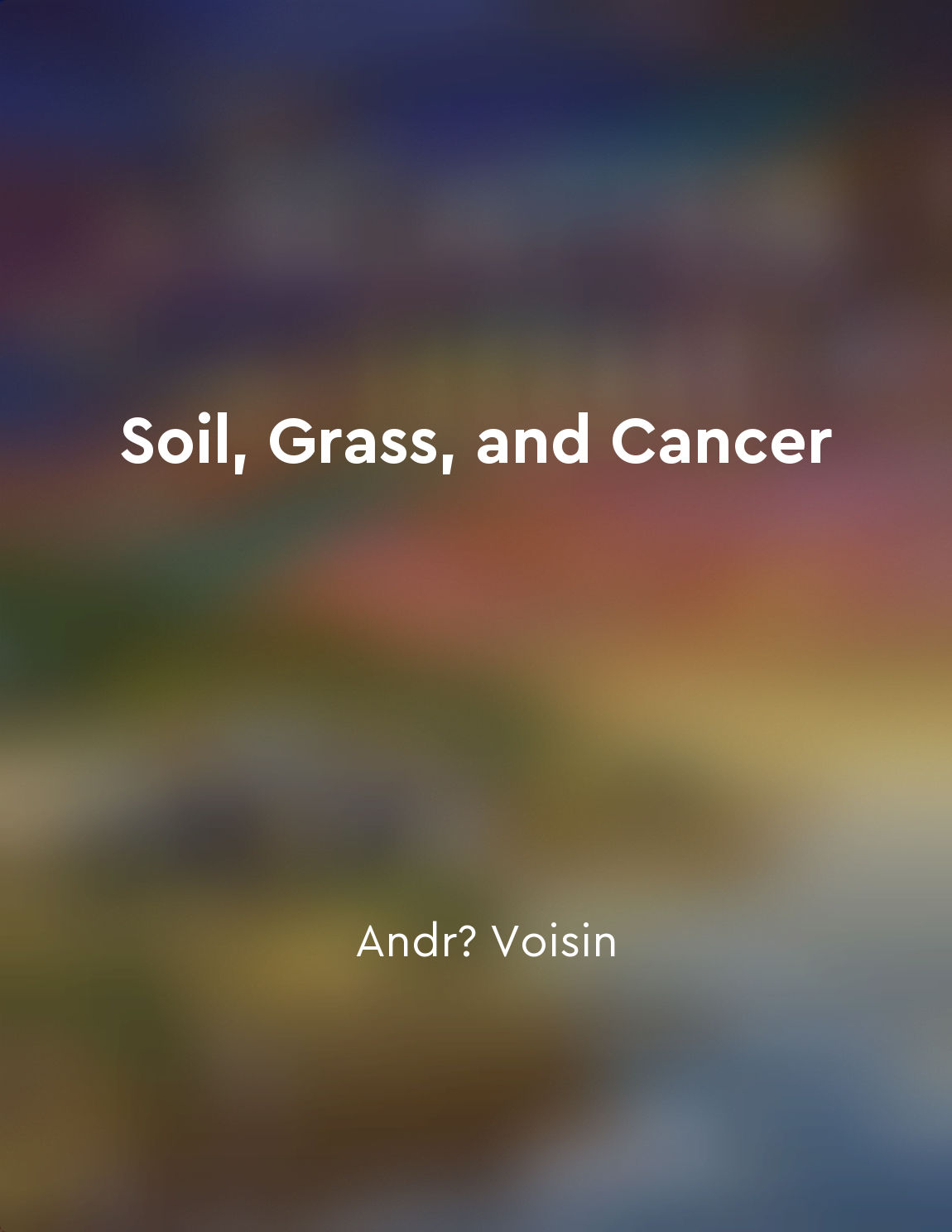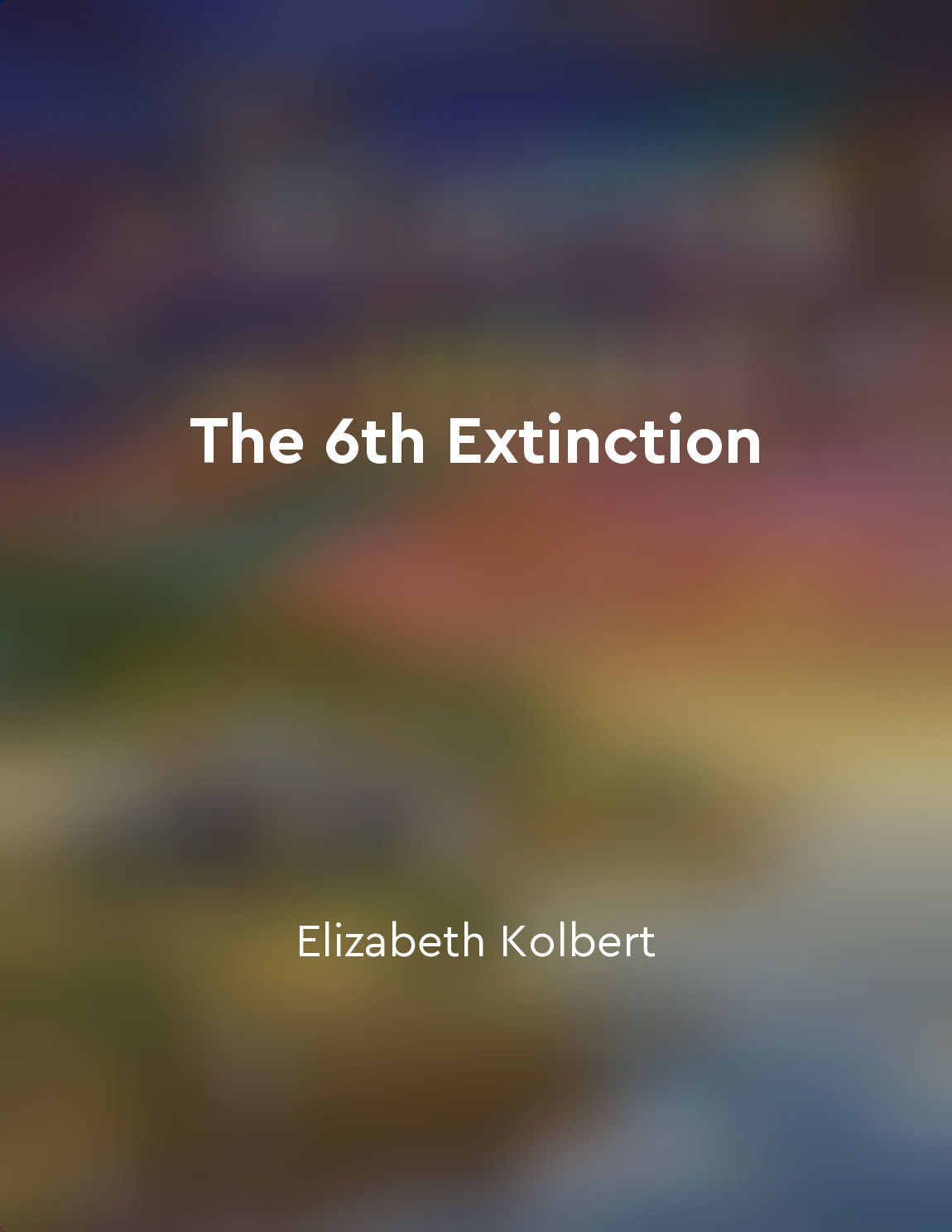Fragility of delicate ecosystems from "summary" of Arctic Dreams by Barry Holstun Lopez
In the Arctic, the ecosystems are delicate and vulnerable, shaped by extreme conditions and intricate interconnections. The balance of life in these regions is finely tuned, with each species playing a crucial role in the ecosystem's overall health and stability. The fragility of these ecosystems is evident in how even small disturbances can have far-reaching consequences, impacting not just one species but the entire web of life. The Arctic ecosystem is a complex tapestry of relationships, where every plant and animal is interconnected in a delicate dance of survival. From the smallest microorganisms to the largest predators, each organism relies on others for food, shelter, and protection. Any disruption in this delicate balance can have cascading effects, leading to a chain reaction of consequences that can ripple through the entire ecosystem. Climate change poses a significant threat to the fragile Arctic ecosystems, with rising temperatures and melting ice altering the landscape at an unprecedented rate. The loss of sea ice, in particular, is a critical issue, as it not only impacts the animals that depend on it for habitat but also affects the entire food chain. As the ice disappears, so too do the algae and plankton that form the base of the Arctic food web, leading to a decline in prey species and ultimately affecting the predators that rely on them for sustenance. Human activities, such as oil drilling and shipping, also pose a threat to the delicate balance of Arctic ecosystems. The introduction of pollutants and disturbances can have devastating effects on the plants and animals that call these regions home, disrupting their natural behaviors and threatening their survival. In a place as remote and pristine as the Arctic, even small disturbances can have lasting impacts, highlighting the fragility of these ecosystems in the face of human interference. Despite the challenges facing the Arctic ecosystems, there is hope for their preservation and protection. By understanding the intricate connections that bind these regions together and working to mitigate the impacts of climate change and human activities, we can help ensure the continued health and vitality of these fragile ecosystems for generations to come. It is only through a concerted effort to conserve and protect these unique and irreplaceable environments that we can safeguard the delicate balance of life in the Arctic for future inhabitants to marvel at and appreciate.Similar Posts
Cultivating resilience is necessary for survival
In the face of unpredictable challenges, societies must develop the ability to bounce back and adapt - in other words, resilien...

Soil health affects grass growth
Soil health plays a crucial role in the growth of grass. The health of the soil directly influences the quality and quantity of...
Human activities impact desert ecosystems
Human activities have a profound impact on desert ecosystems. The delicate balance of these arid environments is easily disrupt...
Sea ice impacts migration
The Arctic is a place of constant change, where the ebb and flow of the sea ice dictates the movements of its inhabitants. For ...
Adapting to changing conditions is essential for survival
Living organisms have an undeniable ability to adapt to changing conditions. This adaptability is not just a remarkable feature...

(Note: The above key ideas have been generated based on the content and themes of the book "The Sixth Extinction" by Elizabeth Kolbert)
The concept of the sixth extinction revolves around the idea that Earth is currently experiencing a mass extinction event, caus...
